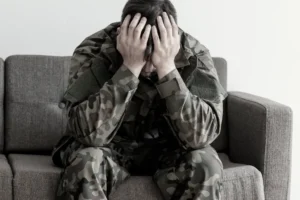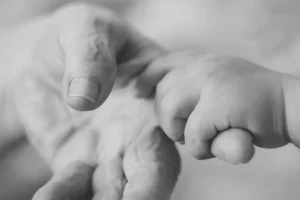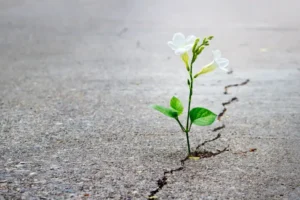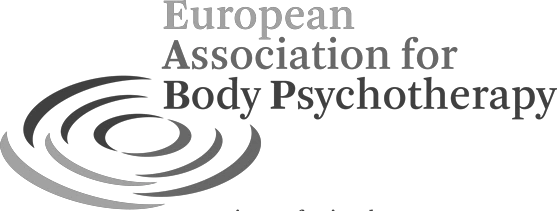Body-oriented Trauma Therapy

Body-oriented trauma psychotherapy represents an effective approach to treating post-traumatic stress disorder (PTSD), developmental trauma and other trauma symptoms.
Body-oriented Psychotherapy for Shock and Developmental Trauma
As in other body-oriented psychotherapy methods, the person is considered as a whole, i.e. psychological trauma symptoms are also understood as an expression of a dysregulation of the nervous system.
The development of body awareness and body awareness and the restoration of self-regulation are therefore important contributions to the treatment of trauma disorders. Physical normalization allows for new meaning and post-traumatic growth.
“Trauma is a fact of life. The good new is, it does not have to be a life sentence. There are ways that people can heal deeply from their history. There is more than hope – there are tools!
Dr. Peter Levine Trauma Researcher & Developer of Somatic Experiencing in Beyond Theory Podcast.
How does body-oriented trauma therapy work?
Body-oriented procedures such as Bodynamic® and Somatic Experiencing® work with physical sensations and emotions in order to process trauma. – It is not necessary to go into the story or relive the past experience, one largely stays in the here and now.
A prerequisite for working through trauma is relative safety. Therefore, as soon as the environment is relatively safe, stabilisation and resource building is started. In addition, self-regulation skills and essential ego functions are built up. After that, trauma processing can begin.
Subsequently, the physical discharge of the trauma takes place through the application of body-oriented psychotherapy methods. Relief of trauma symptoms often accompanies reorganisation of the nervous system.
In addition, the consequences of the traumatisation have to be dealt with cognitively in order to enable a new meaning making and a coherent integration of the experiences into one’s own biography. Therefore, in addition to the body-oriented methods, cognitive methods are used that enable a re-evaluation of the traumatic event.
Ultimately, the trauma must also be understood as an opportunity for personal growth and maturation. Post-Traumatic Growth is about integrating into your personality the immense resources that helped you through the difficult situation.
Integrated trauma therapy with Bodynamic® and Somatic Experiencing®
Step 1
Stabilization & safe environment
- Stabilisation of personal roles (professional / family)
- Safe social environment: Safe people / safe places
- Safe contact to the therapist
Step 2
Build internal resources
- Strengthen emotional regulation
- Strengthen Ego Functions (Centering / Grounding / Boundaries)
Step 3
Trauma Discharge from the body
- Bringing trauma energy gently into motion
- Cautious Trauma Discharge (Somatic Experiencing)
- Processing emotion
Step 4
Post-traumatic growth
- New meaning and interpretation
- Awareness and integration of trauma resources
- Positive integration into identity
Bodynamic® and Somatic Experiencing® – Working with Shock-Trauma
Step 1: Stabilization & safe environment
First of all, stabilisation within the personal life environment must be ensured:
- We need safe places and safe people – i.e. physical and social safe havens.
- We need sufficient safety from the perpetrators of the previous traumatisation.
- We need stability in our roles and in our professional and personal circle
In addition, there is psycho-education – i.e. clarification of how psychological traumatisation occurs, what the consequences are, how the treatment can be carried out, which concrete practical steps are taken in therapy.
First step is to enhance real safety and create a basic cognitive understanding.
Step 2: Build internal resources with Bodynamic®
After or parallel to this, there is a step-by-step build-up of resources
- Learning to experience your own body as a safe place again (work with the body-ego / work with body sensations)
- Learning to deal with emotions and high energy states.
- Build up elementary ego functions such as grounding and centering
- Learning to set boundaries and protect personal space.
The second step is to improve safety in the body and learn to deal effectively with changing conditions.
Step 3: Trauma Discharge with Somatic Experiencing® and Bodynamic®
The aim of the work is to discharge the high energy mobilized in the traumatic situation, in the shock. Essential intervention tools are Somatic Experiencin and Bodynamic:
- Bodynamic®: Supports building of resources and the gentle waking up of given-up states (shutdown/emergency shutdown)
- Somatic Experiencing®: A particularly gentle discharge of high energies (shock energies) is pursued by oscillating between resources and the state of stress and titrating the traumatic energies.
After the discharge, the body and nervous system can regulate themselves again. This allows the person to return from high sympathetic arousal states (which are also below the parasympathetic shut-down) to relaxation and healthy activity. After the danger has been overcome, the body can relax and return to social interaction with other people. The social nervous system becomes active again. Furthermore you can stop fighting oneself and move beyond shame and guilt about the experience.
This discharge of high trauma energies is an essential step in alleviating the symptoms of Post Traumatic Stress Disorder (PTSD). These often include avoidance behaviour, reliving (nightmares, intrusions) and rapid irritability (being triggered) by similar situations.
Through gentle trauma release, the body can begin to return to the normal rhythm of activity and relaxation.
Step 4: Post-traumatic growth
By discharging stored shock energy states, cognitive and emotional coping with the traumatic event becomes possible. This enables new perspectives on the traumatic situation. The development of the personality is promoted through the integration of the traumatic experience.
Research has shown that it is possible for people to emerge from difficult experiences not only more resilient but also more positive and fulfilled in their lives. Psychotherapy can help alleviate the symptoms of PTSD and support positive growth step by step.
“PTSD is a healthy reaction to an unhealthy situation. Through it, your body and mind constantly remind you that it is time to grow from your trauma.”
Ditte Marcher Senior Teacher Bodynamic, Co-Creator of Bodynamic Shock & Trauma Approach.
Post-traumatic growth promotes the following aspects of personal development:
- New meaning and new believes
- New meanings make it possible evaluate one’s experience and actions / non-actions in a different way. You can also start let go of limiting decisions resulting from the trauma and form new believes about yourself and the world.
- Become aware of and integrate trauma resources
- In the traumatic situation, automatic or instinctive survival mechanisms take over, making it possible to survive in the situation. Awareness and acceptance of these resources can contribute to a new sense of safety.
- Spiritual growth
- Positive resources can often be tapped during trauma processing and personal growth – including a connection to a higher power.
- Positive integration into identity
- Identity development is about stepping out of the victim identity and being able to see yourself as an active designer of your life and your relationships for the present and future.
There is no guarantee of post-traumatic growth, especially if post-traumatic stress disorder has already developed. In this case, the first priority is to alleviate the symptoms.
With post-traumatic growth, it becomes possible to integrate the shock experiences into one’s personality and life story and to grow from it.









